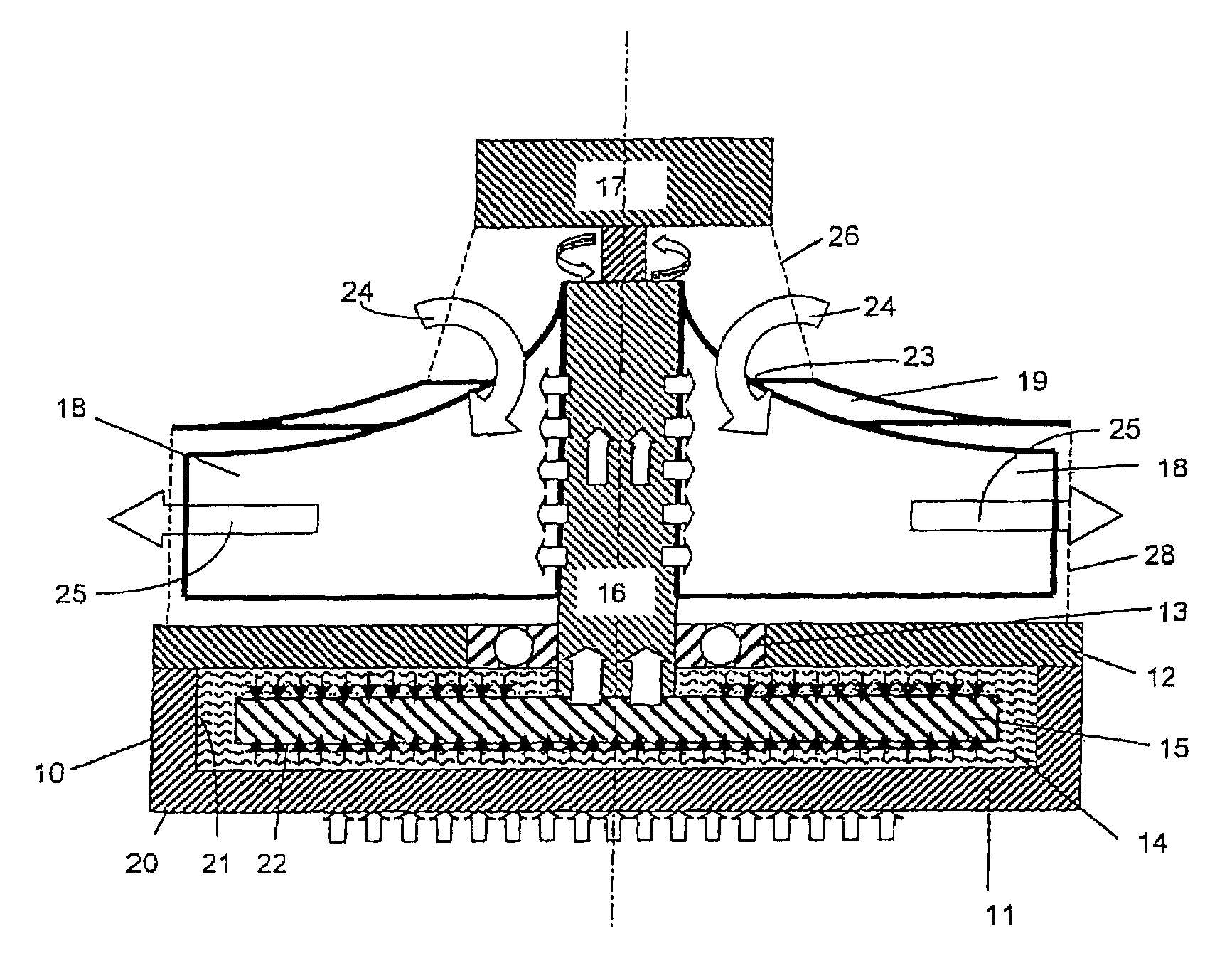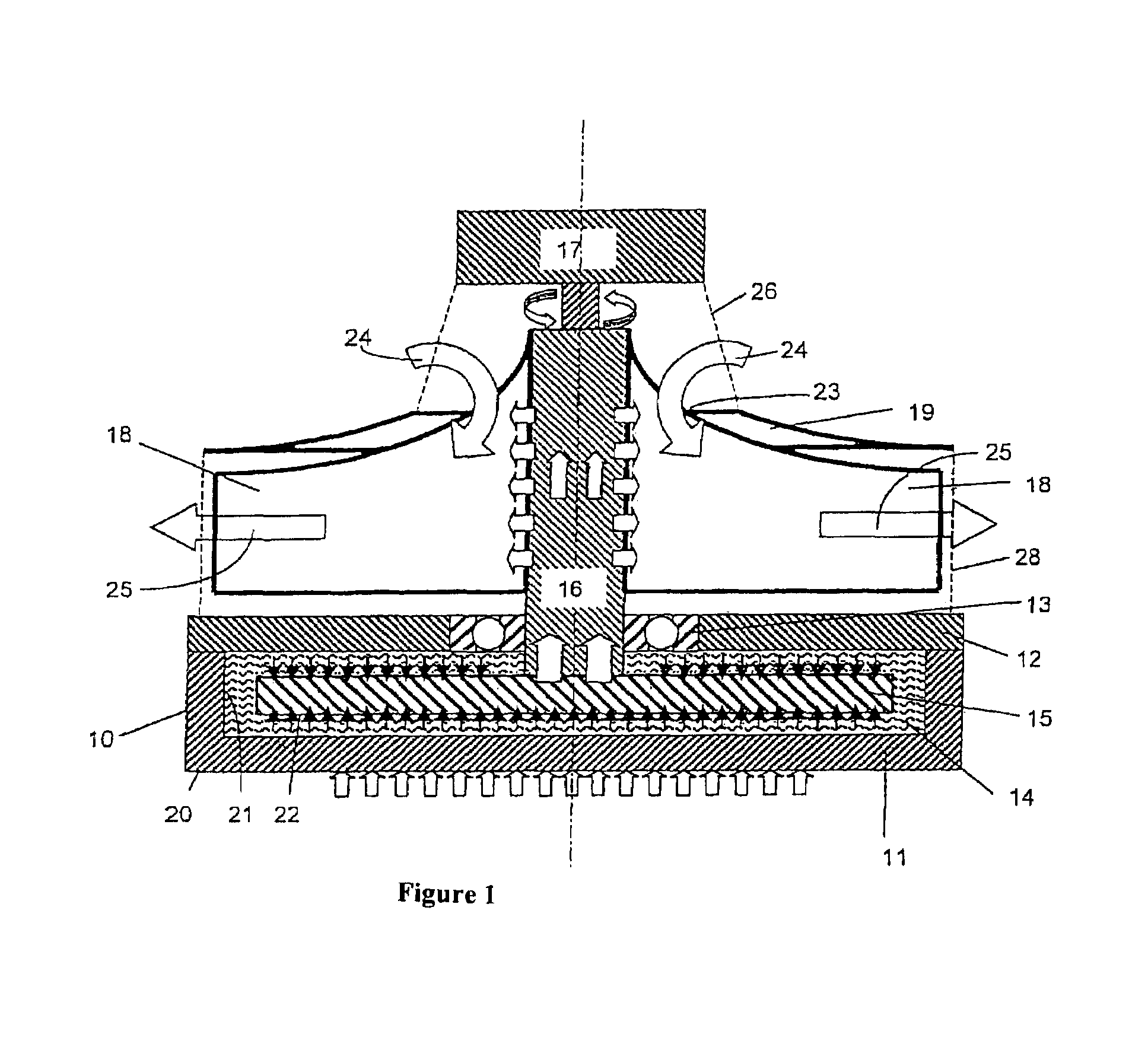Cooling apparatus
a cooling device and cooling chamber technology, applied in lighting and heating apparatus, indirect heat exchangers, semiconductor/solid-state device details, etc., can solve the problems of inefficiency of local cooling fan, inability to efficiently conduct heat into the fin, and inability to efficiently conduct heat to the environment. to achieve the effect of improving heat transfer, increasing heat emission, and reducing the number of cooling fins
- Summary
- Abstract
- Description
- Claims
- Application Information
AI Technical Summary
Benefits of technology
Problems solved by technology
Method used
Image
Examples
Embodiment Construction
[0014]The FIGURE shows a cooling structure 10 taking the form of a closed container that comprises a baseplate 11 and a cover 12. A cylindrical cavity is formed in the baseplate 11 that is tightly sealed by the cover 12. Suitable materials for the baseplate 11 and the cover 12 include high heat-conducting materials such as aluminum or copper. A heat-conducting medium 14, particularly a liquid medium, is enclosed in the container 10, the container being fully filled with this medium 14. Apertures (not illustrated) that can be hermetically sealed may be provided in the cover 12 and / or the baseplate 11 for purposes of filling the container 10.
[0015]A shaft 16 is rotatably supported in the container cover 12 by means of a roller bearing 13, particularly a ball bearing. Instead of a roller bearing, a sliding bearing, particularly a fluid bearing or a hydrodynamic bearing, can be provided. The shaft 16 extends into the interior of the container 10 and is fixedly connected to a rotating me...
PUM
 Login to View More
Login to View More Abstract
Description
Claims
Application Information
 Login to View More
Login to View More - R&D
- Intellectual Property
- Life Sciences
- Materials
- Tech Scout
- Unparalleled Data Quality
- Higher Quality Content
- 60% Fewer Hallucinations
Browse by: Latest US Patents, China's latest patents, Technical Efficacy Thesaurus, Application Domain, Technology Topic, Popular Technical Reports.
© 2025 PatSnap. All rights reserved.Legal|Privacy policy|Modern Slavery Act Transparency Statement|Sitemap|About US| Contact US: help@patsnap.com


